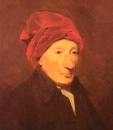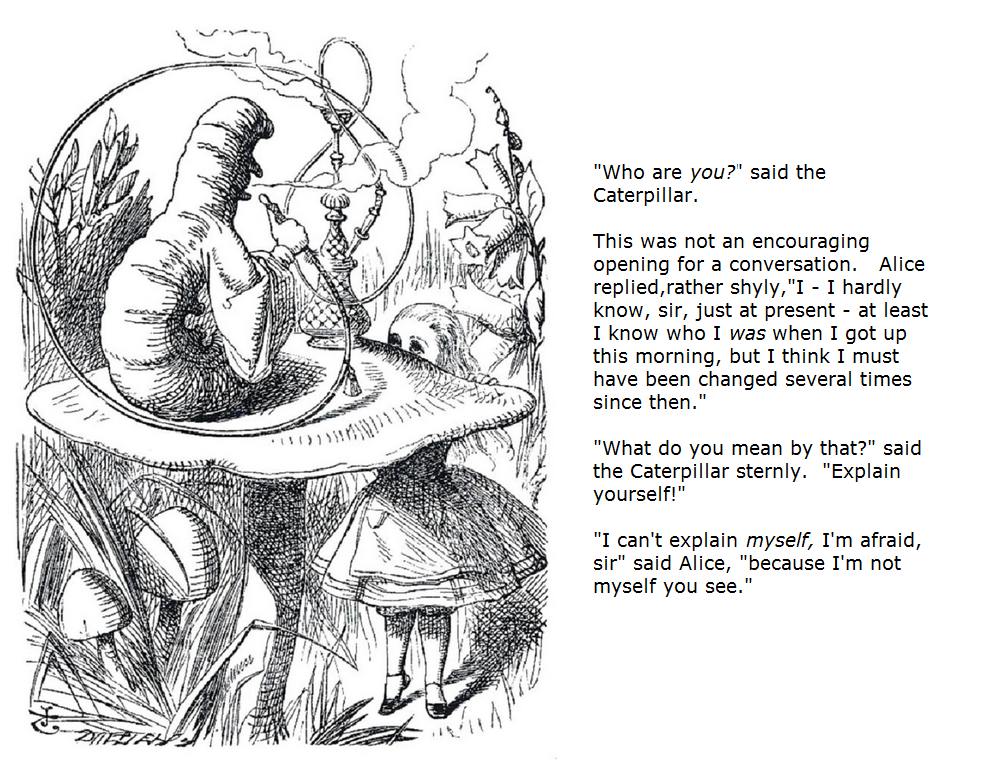by Michael Davidson
One of the problems in philosophy is how to set standards by which philosophical theories might be evaluated. Various philosophers have proposed razors, ie philosophical principles that can be used to cut away and discard other philosophical principles and ideas. Perhaps the best known are Ockham’s Razor and Hume’s Fork. Another razor is ‘common sense’. This term has unfortunately become a pejorative in some philosophical and ‘scientific’ circles along with ‘folk psychology’ which means explanations of the behaviour of people in terms of their beliefs and goals, rather than in ‘scientific’ terms such as neurophysiology. One objection to the term ‘common sense’ is that though everyone presumes to have it, it seems to be remarkably absent in others, and it lacks any agreed definition.
Another objection is that our best physics (ie quantum mechanics and relativity) “defies common sense” and since this physics describes how the world is, common sense can and should be discarded as inconsistent with reality. The astrophysicist John Barrow, for example, defines common sense as
“a description that crystallises from what is already known, and implies a certain unwillingness to admit any change, …the implication being that any deviation from it would be uncommonly senseless”.(Barrow 1988)
Similarly the biologist Lewis Wolpert contends
“that ‘natural’ thinking – ordinary day-to-day common sense – will never give an understanding about the nature of science. Scientific ideas are with rare exceptions counter-intuitive: they cannot be acquired by simple inspection of phenomena and are often outside everyday experience. Secondly, doing science requires a conscious awareness of the pitfalls of ‘natural’ thinking. For common sense is prone to error when applied to problems requiring rigorous and quantitative thinking; lay theories are highly unreliable.
. . .I would almost contend that if something fits in with common sense it almost certainly isn’t science. The reason is that the way in which the universe works is not the way in which common sense works.
. . . common sense thinking is quite unsatisfactory [for science]. It is quite different from scientific thinking lacking the necessary rigour consistency and objectivity.
. . . One of the strongest arguments for the distance between common sense and science is that the whole of science is totally irrelevant to most people’s day to day lives.” (Wolpert 1992)
This view seems to promote the alienation of science from the rest of human activity. If science is antithetical to ‘common sense’ it does not follow that because something is contrary to ‘common sense’ it must be true. In another part of the book, Wolpert states that he is ‘a common-sense realist’ ie “I believe there is an external world which I share with others and which can be studied.” but holds that his philosophical position is irrelevant to his scientific activities.
In both these examples ‘common sense’ seems to mean the frequent notions that people have about the world particularly in those areas in which they have little or no experience. Appeals to common sense certainly ought to be more careful and more specific about what particular principle is held to be ‘sensible’ and ‘common’. But neither ‘frequent beliefs’ nor ‘common sense’ are a single principle.
The foremost ‘common sense’ philosopher was probably the Scottish philosopher Thomas Reid (1710 – 1796). Reid acknowledged Francis Bacon and John Locke as his predecessors. Reid’s standing as a philosopher diminished at the hands of Kant who was dismissive of common sense as
“but an appeal to the opinion of the multitude, of whose applause the philosopher is ashamed, while the popular charlatan glories and confides in it.” (Kant 1783)
The most well-known ‘common sense philosopher’ of the twentieth century was G E Moore (1873-1958), through his defence of common sense in an essay.(Moore 1925) Karl Popper also claimed that his philosophical theories did not clash with common sense nor with science (Popper 1983). Commitment to ‘common sense’ is of course no guarantee of having it.
Defining what we mean by common sense is not easy. Generally we define it by those things which are not it, for example when someone does something we consider stupid. If we look up the two words in the dictionary we find:
common: shared (as in ‘common property’); open or free to all (as in ‘common land’); frequent (as in ‘a common event’); inferior (as in ‘a common dwelling’).
sense: sensation (as in ‘sense of pain’); understanding (as in ‘it makes sense’); sound reasoning and judgement (as in ‘to speak sense’); opinion or sentiment (as in ‘the sense of the meeting’).
With four possible meanings each of ‘common’ and ‘sense’, (plus some minor meanings) we have plenty of room for misunderstanding and misrepresentation. The form of common sense that is usually dismissed as useless is ‘frequent opinions’ or ‘frequent notions’. Many frequent notions are false and misleading. That is no news. A different reading of the term ‘common sense’ is “the power of reasoning and judgement possessed by people in general and open and free to all.” Very often when this power is brought to bear on frequent notions they are seen to be the falsehoods they are. What is missing from frequent false notions is exactly this power. Obviously I do not mean to say that all mankind are capable of discourse on quantum mechanics; but I do mean to say that most people given the inclination, aptitude and application would be able to appreciate the subject. The sciences are built on this power presumed to exist for all. Not everyone can be an Einstein and trail blaze, but we assume that everyone with an inclination can follow. In the sciences, at least, there are no private lines to God.
‘Common sense’ is for reasons mentioned an unfortunate term. A possible alternative term is ‘good sense’ which perhaps escapes the connotation of “everybody knows (that which turns out not to be so)”, and perhaps sees the term more as an epistemological one than a metaphysical one. It is difficult to see how any principle can stand once we throw out good sense as a starting point.
Reid defined common sense as “that degree of judgement which is common to men with whom we can converse and transact business” (Reid 1785a) I have no quarrel with this definition. To try to avoid the unfortunate connotations of the term ‘common sense’ I refer to this as ‘Reid’s Razor’. Take a philosophical or scientific principle that is being applied to a particular situation: ask yourself whether you would be able to converse rationally and transact business with that person assuming that principle governed the situation or persons involved. If not dismiss the principle as erroneous or at least deeply suspicious. For example, suppose someone proposes that things-as-they-appear-to-be are not things-as-they-really-are. I do not think I would buy a used car from this man.

Thomas Reid (1710 – 1796)
Reid goes on to list a number of principles that he holds to be contingently true (but not necessarily true all the time) (Reid 1785b)
1) Everything of which I am conscious really exists
2) The thoughts of which I am conscious are the thoughts of a being which I call myself, my mind, my person.
3) Events that I clearly remember really did happen.
4) Our personal identity and continued existence extends as far back in time as we remember anything clearly.
5) Those things that we clearly perceive by our senses really exist and really are what we perceive them to be.
6) We have some power over our actions and over the decisions of our will.
7) The natural faculties by which we distinguish truth from error are not deceptive.
8) There is life and thought in our fellow-men with whom we converse.
9) Certain features of the face, tones of voice, and physical gestures indicate certain thoughts and dispositions of mind.
10) A certain respect should be accorded to human testimony in matters of fact, and even to human authority in matters of opinion.
11) For many outcomes that will depend on the will of man, there is a self-evident probability, greater or less according to circumstances.
12) In the phenomena of Nature, what happens will probably be like what has happened in similar circumstances.
According to Reid, anyone who doubts these principles will be incapable of rational discourse and those philosophers who profess to doubt them cannot do so sincerely and consistently. Each of these principles, if denied, can be turned back on the denier. For example, although it is not possible to justify the validity of memory (3) without reference to premises that rest on memory, to dispense with memory as usually unreliable is just not philosophically possible. Reid qualifies some of these principles as not applying in all cases, or as the assumptions that we presume to hold when we converse, which may be contradicted by subsequent experience. For instance with regard to (10) Reid believes that most men are more apt to over-rate testimony and authority than to under-rate them; which suggests to Reid that this principle retains some force even when it could be replaced by reasoning.
I endorse Reid’s principles as normally true and what we must assume to be true to engage in argument and discussion. But, as Reid acknowledges, not all may be true all the time. I thus see Reid’s principles as epistemological rather than metaphysical. Psychologists might point to such things as optical illusions, false memory, attentional blink, hallucinations and various other interesting phenomena which might throw some doubt over some of Reid’s assertions. But these are nonessential modifiers that if entertained as falsifications of these principles would lead to the collapse of all knowledge. Very few philosophers have not acknowledged that the senses can deceive us or that reason is fallible, but to say the senses consistently deceive or that reason is impotent is too big a sacrifice. That the senses can deceive and reason is fallible is good reason to be cautious in our conclusions but not a good reason to dispense with observation and reason all together. Whereas it may be true that
“we are the sort of creatures who cannot help but believe some things that are false,” and “There seems to be no guarantee that our epistemic capacities really give us access to the world,” (Jamieson 1991)
it does not follow that everything we believe is false, nor that our most cherished beliefs – 1 to 12 above – are entirely false.
References
Barrow J (1988) The World within the World, Oxford University Press, p54
Jamieson D (1991) Method and Moral Theory in Singer P (ed) A Companion to Ethics Blackwell p 476-487
Kant I (1783) Prolegomena to any Future Metaphysics transl J Fieser p6 available at http://www.forgottenbooks.org
Moore GE (1925) A Defence of Common Sense in Muirhead JH (ed) Contemporary British Philosophy (2nd series), available at http://www.ditext.com/moore/common-sense.html.
Popper K (1983) Realism and the Aim of Science Routledge p131
Reid T (1785a) Essays on the Intellectual Powers of Man, Essay 6 Chapter 2 available at http://www.earlymoderntexts.com/pdfbig/reidibig.pdf (p217)
Reid T (1785b) Essays on the Intellectual Powers of Man, Essay 6 Chapter 5 ibid p240-51
Wolpert L (1992) The Unnatural Nature of Science Faber & Faber pp xi,11,12,16,106,487
[amazon_link asins=’B007JYFHVM,B007KNSB24,B008VTB6TQ,0198519796,0631187855,0415084008,0674929810′ template=’ProductCarousel1′ store=’retthemin-21′ marketplace=’US’ link_id=’b83c531a-4554-11e7-9ce0-a92dcf3c7501′]

